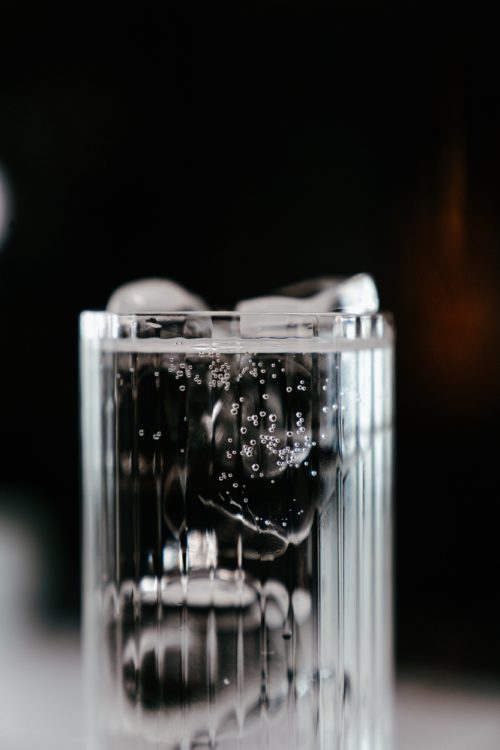
You want to get a water filtering system, but you are uncertain about which one to use? There are many ways and methods available to purify or filter water, such as a countertop water filter. But which one is the best? And which one should you be using?
What’s the Difference Between Water Purification and Water Filtration?
First, let’s clarify the difference between water purification and water filtration:
Water purification means removing what is unhealthy and unwanted from water. It means treating the water in a way that removes bacteria and viruses, making it safe to drink. Water purification is the process that produces tap water. Typically it includes treating water with chemicals like chlorine, chloramine, and other disinfectants.
On the other side, water filtration is the method used to remove and reduce impurities in water. A good water filter removes unwanted particles but leaves the most important salts and minerals in it. Water filters usually remove harmful elements like chemicals, dirt, heavy metals and more. When going through a filter, water comes out smelling and tasting much better. And some water filters may even reduce hard water minerals.
The Best Ways to Filter Your Water
Filter Types
There are a few ways to filter tap water, such as using a water filter jug, a reverse osmosis system, an inbuilt water filter, a fridge water filter and bottles with integrated water filters. One can also use a counter-top filtration system, faucet-mounted filter or a water filter that gets plumbed in which is also known as point-of-entry or house water filter.
We’re going to examine each type of water filter in more detail below!
Filtration Methods
Practical ways to clean water are distillation, reverse osmosis, and carbon filtering.
Carbon filtering is the quickest and easiest method to use. The carbon is also referred to as activated carbon. It’s comes as small, granular pieces or in powdered block form, and it is highly porous. Due to this quality, it can absorb more contaminants and allergens than traditional carbon.
There are many advantages to using activated carbon filters, such as removing chlorine, bad tastes, odors, and other contaminants like trihalomethanes, mercury, pesticides, herbicides, iron, heavy metals, lead, and in some cases bacteria.
Also, carbon filters can be used in both point of entry (POE) applications to filter all water coming into a home or at the point of use (POU) to clean water for a single tap.
Another highly effective method to filter water is reverse osmosis. It is one of the most extensive ways to filter water, removing up to 98% of dissolved solids.
The way it works is it removes contaminants from unfiltered water by pressure-forcing it through a semi-permeable membrane. The membrane has tiny pores that block contaminants but allows water molecules to pass through.
But a reverse osmosis system has more filtering stages than just the RO membrane. Pre-filters remove sediments and chemicals like chlorine. After the water exits the membrane, it passes through one or more post-filters for polishing before the drinking water comes out of a dedicated faucet.
The benefits derived from reverse osmosis are:
- Reduces harmful contaminants
- Less sodium content
- Neutralizes bad tastes and odors
- Eco-friendly (by reducing the need for bottled water)
- Easy to install and maintain
- It fits under the kitchen sink
Bottom line: If you are looking for a reliable way to filter the water in your home, consider a reverse osmosis system. The last way of filtering water at home that we want to discuss in this post is water distillation.
Water distillation works by heat water to its boiling point. The water evaporates and rises as steam leaving all impurities behind. Then it is cooled and condenses. At the end of the process, all that’s left is pure water. All contaminants are still in the heating chamber. By the way, the heat kills of the majority of bacteria.
The only type of water contaminant that distillation cannot remove is volatile organic composites like herbicides and pesticides. That’s due to their low boiling point. Distillation is best for removing “heavy” contaminants. It can eliminate 99.5% of impurities like nitrates, bacteria, dissolved solids, lead and sodium.
The Different Types of Water Filters
There are many different types of water filters for home use. Here some of the most used:
Pour-through filters are the most convenient. The filter is inside a jug or carafe and can be kept in a refrigerator. The downside: These filters have a short lifespan.
Faucet filters can be screwed directly on a faucet. The installation work is minimal.
Counter-top filters are best used when filtering large quantities of water without the need to modify pipes.
Under sink systems are installed under a kitchen or bathroom sink, directly into an existing cold water line. They, too, can be used to purify a large amount of water without messing with water lines. They also prevent cluttering of the counter-top. However, plenty of cabinet space is required.
Whole house filters or point of entry filters directly connect to the water main and filter all water as it enters a house. This gives you access to filtered water throughout your entire home, including the kitchen, bathroom and laundry room. Speaking of laundry, all home appliances will also receive filtered water.
Whole house filters last for a long time and are easy to maintain. They require professional installation, though, which means additional cost.
Conclusion
Based on how much water you need to filter, the types of contaminants you want to remove, and your budget, you can now decide on what kind of water filter to use in your home.
Remember: There are many ways to filter water and many types of filters. Most effective are reverse osmosis, carbon filtering, and distillation. Water conditions vary from region to region. Therefore, one should get all the information regarding the contaminants present and make an informed decision based on that.







